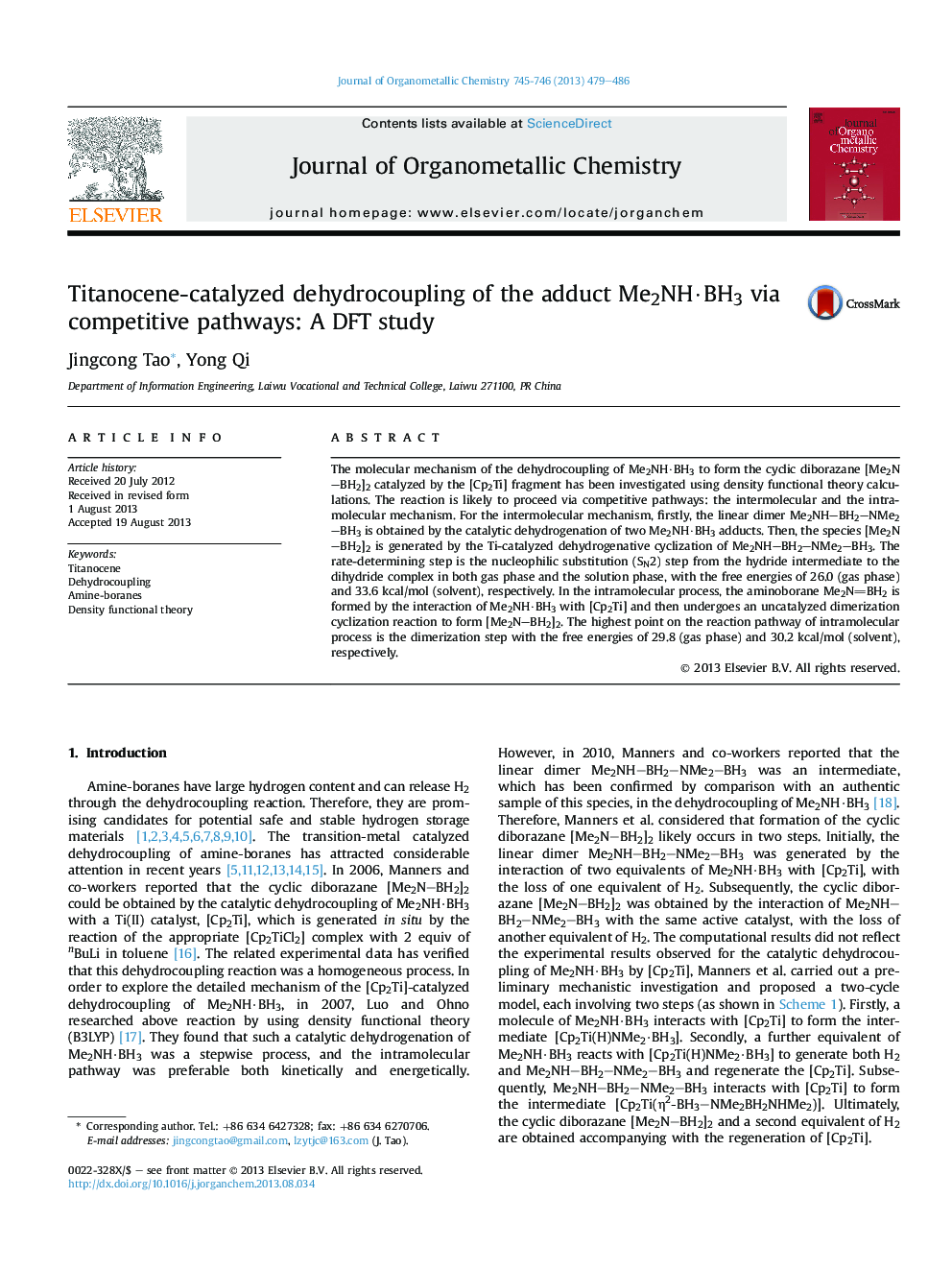| کد مقاله | کد نشریه | سال انتشار | مقاله انگلیسی | نسخه تمام متن |
|---|---|---|---|---|
| 1321565 | 1499894 | 2013 | 8 صفحه PDF | دانلود رایگان |

• The dehydrocoupling of Me2NH·BH3 to form the cyclic diborazane [Me2N–BH2]2 catalyzed by [Cp2Ti] has been studied.
• The reaction is likely to proceed via competitive pathways: the intermolecular and the intramolecular mechanism.
• In the intermolecular process, [Me2N–BH2]2 is formed by the Ti-catalyzed dehydrogenative cyclization of Me2NH–BH2–NMe2–BH3.
• In the intramolecular process, [Me2N–BH2]2 is obtained from Me2NBH2 by the uncatalyzed dimerization cyclization.
The molecular mechanism of the dehydrocoupling of Me2NH·BH3 to form the cyclic diborazane [Me2N–BH2]2 catalyzed by the [Cp2Ti] fragment has been investigated using density functional theory calculations. The reaction is likely to proceed via competitive pathways: the intermolecular and the intramolecular mechanism. For the intermolecular mechanism, firstly, the linear dimer Me2NH–BH2–NMe2–BH3 is obtained by the catalytic dehydrogenation of two Me2NH·BH3 adducts. Then, the species [Me2N–BH2]2 is generated by the Ti-catalyzed dehydrogenative cyclization of Me2NH–BH2–NMe2–BH3. The rate-determining step is the nucleophilic substitution (SN2) step from the hydride intermediate to the dihydride complex in both gas phase and the solution phase, with the free energies of 26.0 (gas phase) and 33.6 kcal/mol (solvent), respectively. In the intramolecular process, the aminoborane Me2NBH2 is formed by the interaction of Me2NH·BH3 with [Cp2Ti] and then undergoes an uncatalyzed dimerization cyclization reaction to form [Me2N–BH2]2. The highest point on the reaction pathway of intramolecular process is the dimerization step with the free energies of 29.8 (gas phase) and 30.2 kcal/mol (solvent), respectively.
Density functional calculations reveal that the dehydrocoupling reaction is likely to proceed via competitive pathways. In the intermolecular process, the species [Me2N–BH2]2 is generated by the Ti-catalyzed dehydrogenative cyclization of Me2NH–BH2–NMe2–BH3. In the intramolecular process, [Me2N–BH2]2 is obtained from Me2NBH2 by the uncatalyzed dimerization cyclization.Figure optionsDownload as PowerPoint slide
Journal: Journal of Organometallic Chemistry - Volumes 745–746, 15 November 2013, Pages 479–486